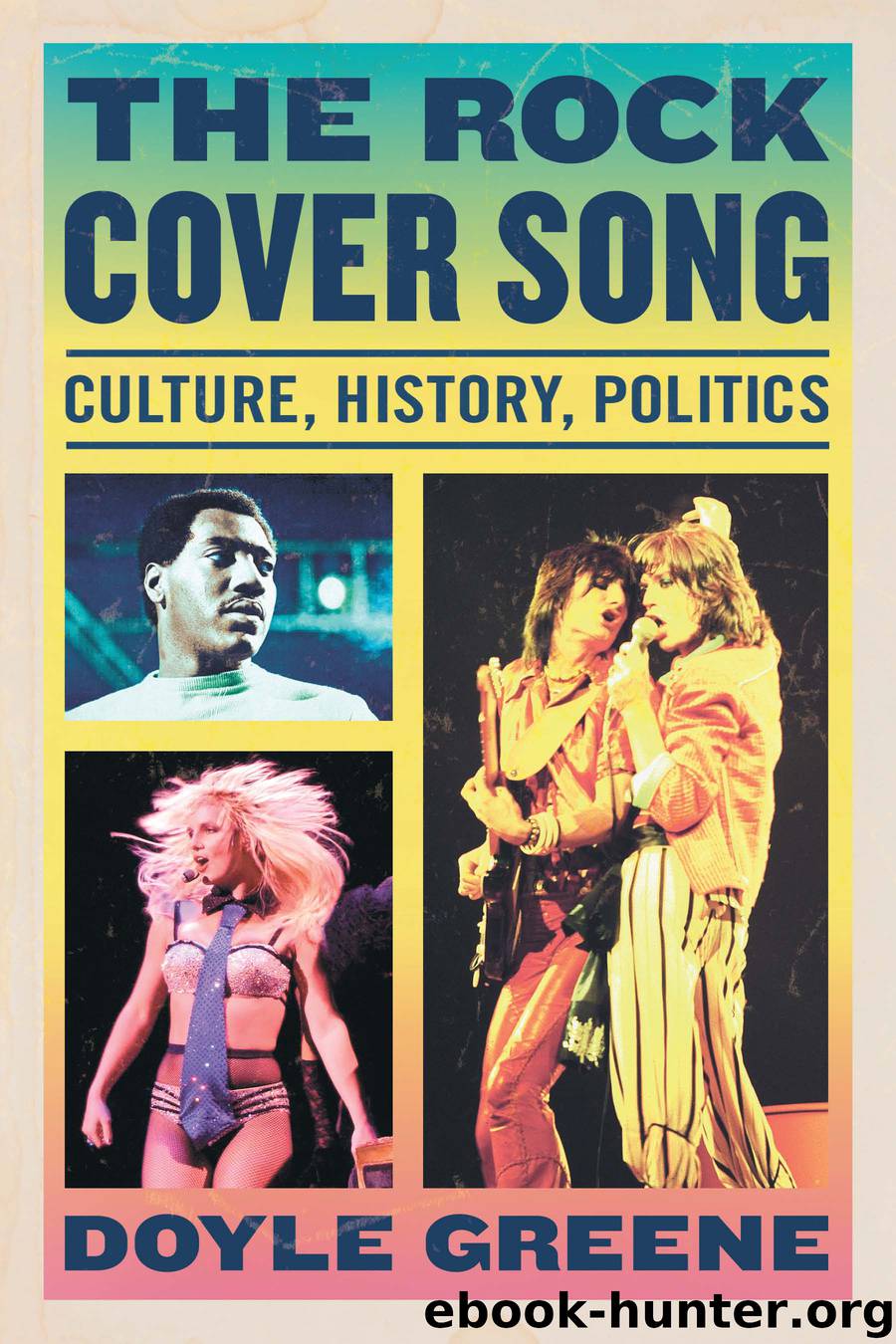The Rock Cover Song by Doyle Greene

Author:Doyle Greene
Language: eng
Format: epub
Publisher: McFarland
Published: 2014-03-26T16:00:00+00:00
Coleman’s longtime bassist Charlie Haden made free jazz explicitly political with Liberation Music Orchestra (LMO), a free jazz big band. Adapting traditional revolutionary songs from Central and South America as well as American folk and patriotic songs for the basis for free jazz improvisations, LMO also performed original compositions by Haden like “Song for Che” and “Circus ’68 ’69.” The inspiration for the latter song occurred when Haden watched the 1968 Democratic National Convention on TV and, amid one of the many breakdowns in order, liberal factions sang “We Shall Overcome” while the orchestra played “You’re a Grand Old Flag” in an attempt to drown the other out.
Archie Shepp was another stalwart of the free jazz movement, and his turbulent and often abrasive brand of free jazz was eminently political. As Shepp put it, “Art cannot be thought of as interchangeable with life on all levels.… IT IS LIFE…. Then music at times must terrify!”3 On “Rufus (Swung, His Face at Last to the Wind, Then His Neck Snapped),” Shepp’s coarse, fragmentary tenor saxophone blasts and gurgles in tandem with the furious bass-drum interplay effectively evoked images of a man strangling and twisting from a noose during a lynching. The Revolutionary Ensemble—a trio of Leroy Jenkins (violin), Sirone (bass), and Jerome Cooper (drums)—released Vietnam in 1972, an album consisting of two 20-plus-minute performances, “Vietnam 1" and “Vietnam 2.” As a musical representation of the war, fragments of ragtime and blues were violently juxtaposed with allusions to Western music ranging from Sousa to Schoenberg along with utilization of drones and scales used in non–Western music to construct a musical battlefield.
What might be termed “transcendental free jazz” emerged with performers like John Coltrane, Albert Ayler, and Sun Ra. As Coltrane moved from bebop to free jazz on records like Ascension (1965) and Meditations (1966), he became increasingly drawn to African, Middle Eastern, and especially Indian music. As Joachim E. Berendt noted, “Considering that conventional tonality, stemming from European music, had meanwhile been stretched to the breaking point [Coltrane] was searching for a kind of substitute … in the ‘modes’ of Indian and Arab music.”4 One of the more controversial free jazz saxophonists, Albert Ayler used almost rudimentary motifs drawn from New Orleans jazz funeral processions, circus music, marches, hymns, polka, and waltz as a basis for frenzied excursions that suggested an evangelical church service with the instruments replicating convulsing bodies and speaking in tongues. Using electronic as well as acoustic instrumentation, Sun Ra and his Arkestra big band engaged in lengthy musical explorations around Sun Ra’s highly personal mythology that incorporated elements of Egyptology, the civil rights movement, and intergalactic travel—one might say the past, present, and future.
In sum, the politics of free jazz entailed adopting traditional American black music and non–Western music at a time when the American civil rights movement was raging and Third World national liberation movements and revolutions were proliferating. Equally important, free jazz represented a rejection of tonality as “the musical language of the bourgeois era” (Adorno).
Download
This site does not store any files on its server. We only index and link to content provided by other sites. Please contact the content providers to delete copyright contents if any and email us, we'll remove relevant links or contents immediately.
The Goal (Off-Campus #4) by Elle Kennedy(13484)
Kathy Andrews Collection by Kathy Andrews(11709)
Diary of a Player by Brad Paisley(7463)
What Does This Button Do? by Bruce Dickinson(6125)
Assassin’s Fate by Robin Hobb(6103)
Big Little Lies by Liane Moriarty(5680)
Altered Sensations by David Pantalony(5031)
Pale Blue Dot by Carl Sagan(4887)
Sticky Fingers by Joe Hagan(4087)
The Death of the Heart by Elizabeth Bowen(3533)
The Heroin Diaries by Nikki Sixx(3481)
Beneath These Shadows by Meghan March(3251)
Confessions of a Video Vixen by Karrine Steffans(3231)
How Music Works by David Byrne(3159)
The Help by Kathryn Stockett(3068)
Jam by Jam (epub)(3009)
Harry Potter 4 - Harry Potter and The Goblet of Fire by J.K.Rowling(2975)
Strange Fascination: David Bowie: The Definitive Story by David Buckley(2784)
Petty: The Biography by Warren Zanes(2684)
